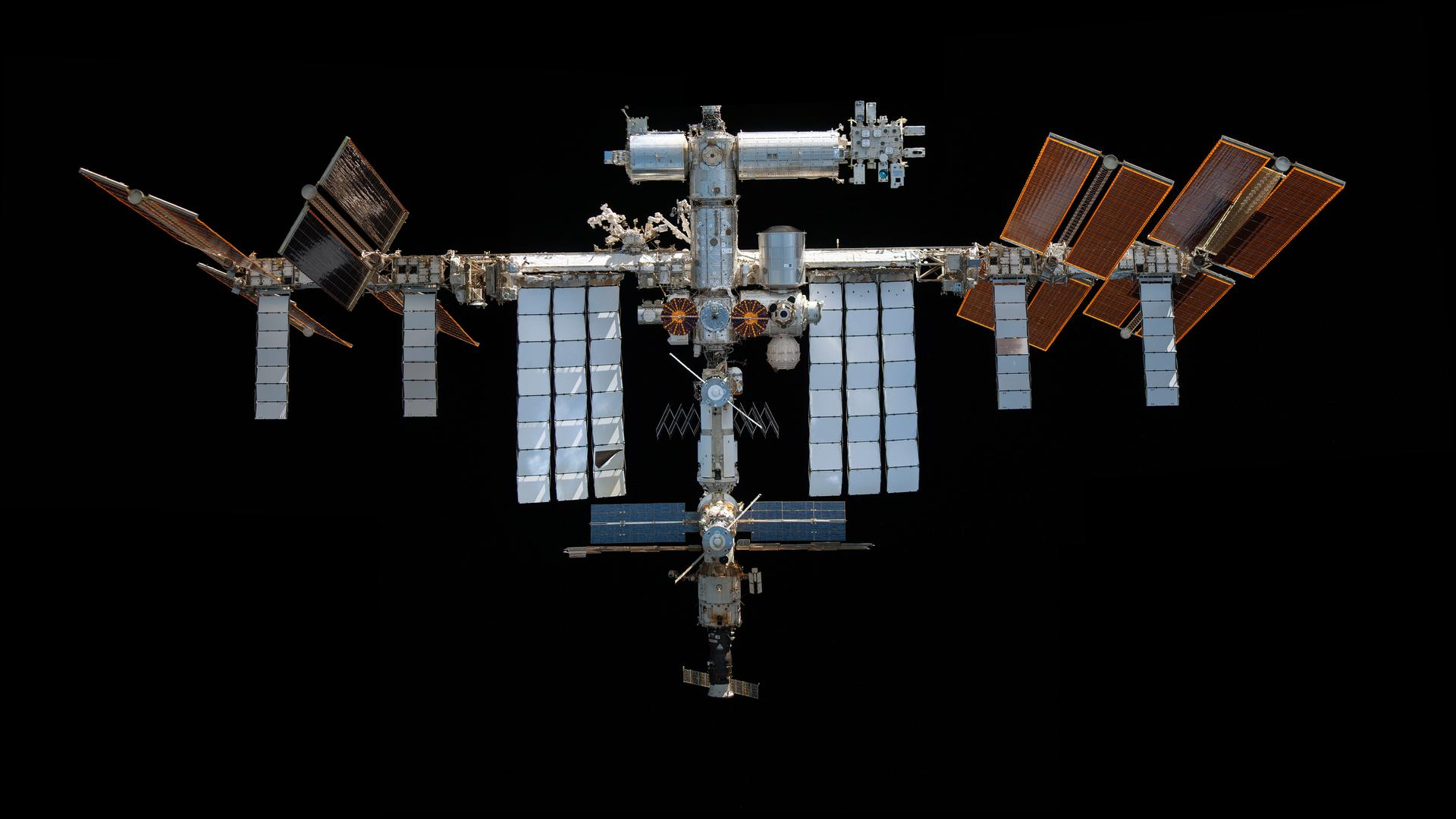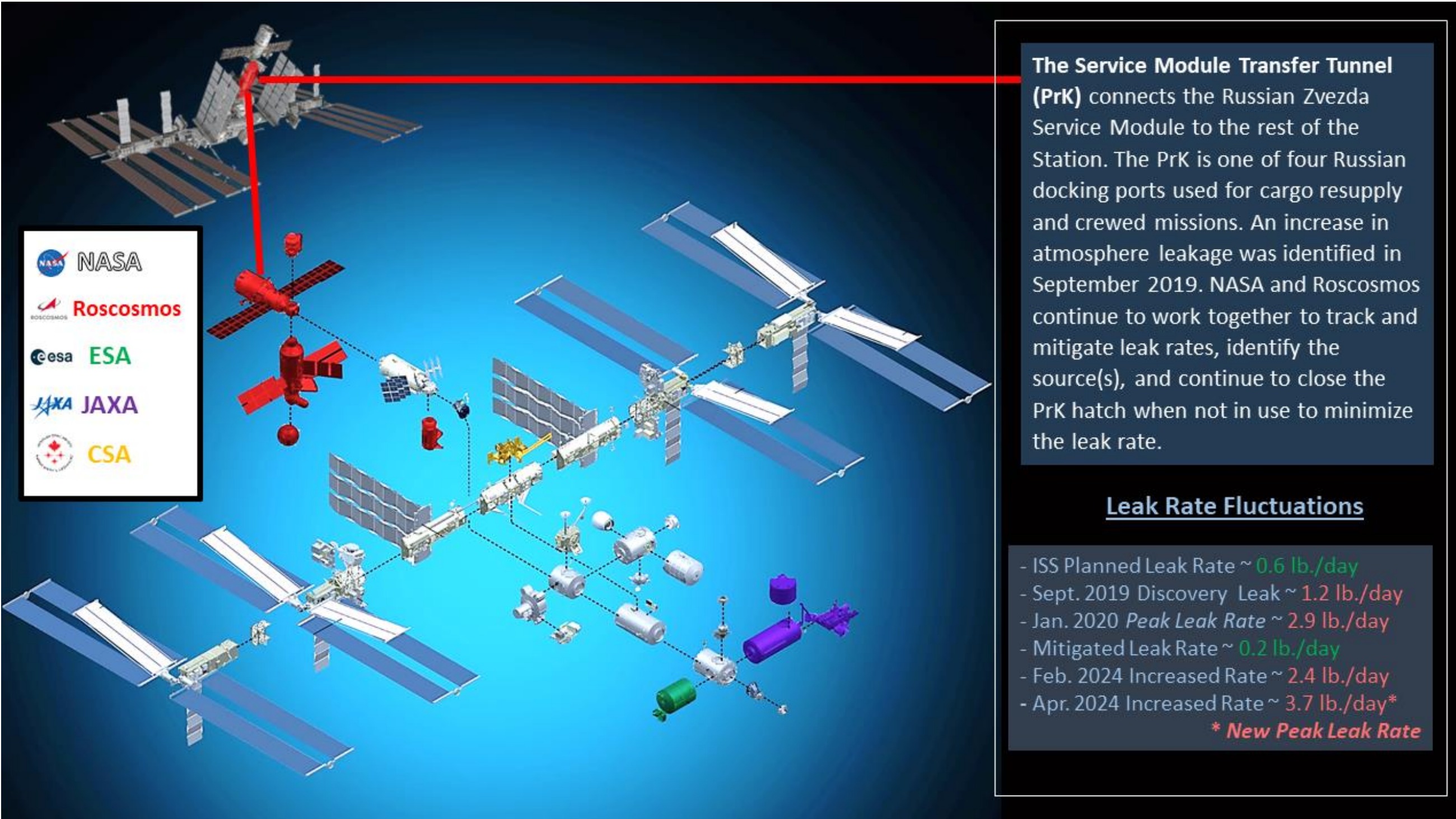ISS leaks among 50 'areas of concern' for astronaut safety: report
NASA and Russia are working together on addressing the situation in the wake of an Office of the Inspector General report last month.

NASA and its Russian counterpart have identified 50 "areas of concern" related to a long-running leak aboard the space station, a media report states.
The leak has been ongoing since 2019 in the Russian segment of the International Space Station (ISS) and was the focus of a new report from NASA's Office of the Inspector General (OIG) published in September. While NASA and Roscosmos are addressing the leak, it remains a top "safety risk" for astronauts on board, the OIG report stated.
NASA officials, speaking in an exclusive with the Washington Post, said they are tracking four cracks and 50 other "areas of concern" on the ISS. The cracks have "all been covered with a combination of sealant and patches" by Roscosmos, NASA noted in a statement to the newspaper, and fixes are ongoing. Still, the leaking area is the top risk, at a 5 on a scale of 5, in NASA's internal risk assessments, the OIG stated.
"We have conveyed the seriousness of the leaks multiple times, including when I was in Russia earlier this year," associate administrator Jim Free added in an interview with the Post. Since the leaks are adjacent to a hatch, Free added that Roscosmos acquiesced to a NASA request to close the hatch as much as possible: “We've come to a compromise that they close it in the evening."
NASA astronauts also remain on the U.S. side of the orbiting complex to be close to their escape vehicles, in case of the need of evacuation, the agency noted in its statement to the news outlet. That said, NASA has stressed repeatedly that the leak poses no immediate threat to astronauts.
"Not an impact right now on the crew safety or vehicle operations, but something for everybody to be aware of," ISS program manager Joel Montalbano said in a news conference in February 2024 when the leak temporarily increased to 2.4 pounds per day, up from a historic low of 0.2 pounds per day.
Related: Top 'safety risk' for the ISS is a leak that has been ongoing for 5 years, NASA audit finds
Get the Space.com Newsletter
Breaking space news, the latest updates on rocket launches, skywatching events and more!

The leak has been ongoing for five years and patches have been ongoing since it was first uncovered; agency officials noted in a Sept. 27 livestreamed briefing that repair work reduced the high leak observed in April 2024 by roughly a third.
The escaping air originated in a service module transfer tunnel in Russia's Zvezda module that launched in 2000. Zvezda, along with the rest of the ISS, is aging and requires maintenance to keep going in orbit. The ISS is supposed to last until 2030 to serve both NASA's staffing needs, and also to provide commercial low Earth orbit research. In the following decade, NASA hopes to have a set of commercial space stations ready to take over operations.
NASA's OIG is tracking several other risks that could imperil keeping the ISS going that long, ranging from a sudden micrometeoroid strike to supply chain issues.
SpaceX has been tasked to build a large Dragon-type spacecraft to remove the ISS from orbit, in a contract awarded by NASA earlier this year. The OIG stated it will be looking to learn more about the schedule, costs and risks associated with the new vehicle and the deorbiting plan.
Join our Space Forums to keep talking space on the latest missions, night sky and more! And if you have a news tip, correction or comment, let us know at: community@space.com.

Elizabeth Howell (she/her), Ph.D., was a staff writer in the spaceflight channel between 2022 and 2024 specializing in Canadian space news. She was contributing writer for Space.com for 10 years from 2012 to 2024. Elizabeth's reporting includes multiple exclusives with the White House, leading world coverage about a lost-and-found space tomato on the International Space Station, witnessing five human spaceflight launches on two continents, flying parabolic, working inside a spacesuit, and participating in a simulated Mars mission. Her latest book, "Why Am I Taller?" (ECW Press, 2022) is co-written with astronaut Dave Williams.









